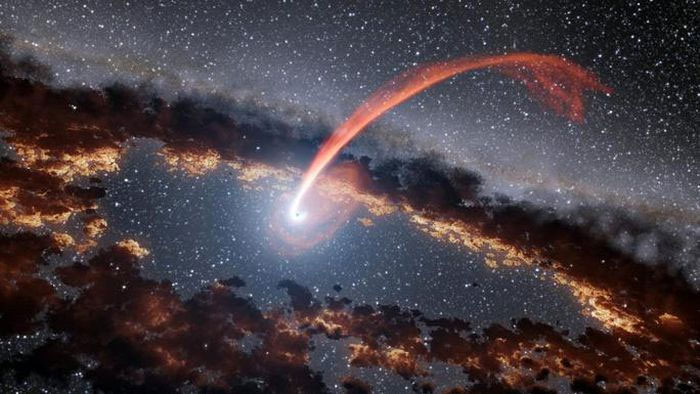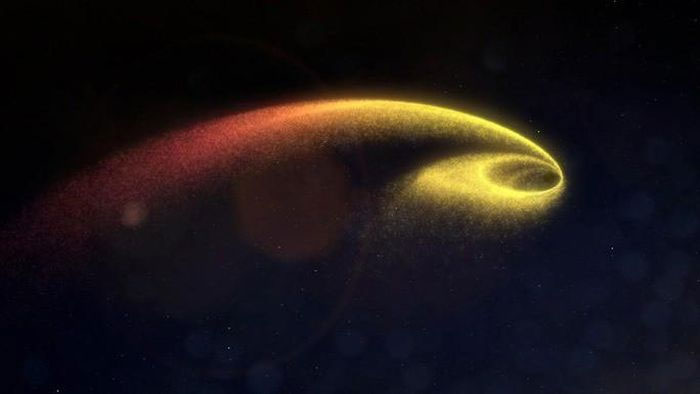Astronomers at the University of Arizona (USA) have recorded a deadly encounter between a medium-mass black hole and an unfortunate star.
According to a report by SciTechDaily on September 19, in an article published in the scientific journal The Astrophysical Journal, a team of astronomers led by researcher Sixiang We at the University of Arizona used X-rays emitted from a tidal disruption event known as J2150 to perform the first black hole mass measurement. They observed this medium-mass black hole, which is over 10,000 times the mass of the Sun, from a long time ago.
The astronomers noted the deadly encounter between the aforementioned black hole and a star, creating a long streak of light. This indicates that the ill-fated star was devoured and consumed by the black hole.

Light from the star being torn apart before being consumed by the black hole. (Image: NASA).

Tidal disruption event. (Image: NASA).
Researcher We stated, “The X-ray emission from the inner disk formed by the debris of the dead star allows us to infer the mass of the black hole and classify it as a medium-mass black hole.”
“Observing this black hole as it devours a star gives us the opportunity to observe things that are considered invisible. Moreover, by analyzing the light, we can gain a better understanding of this elusive type of black hole and estimate the majority of black holes at the centers of galaxies,” said astronomy professor Ann Zabludoff, co-author of the paper.
“We still know very little about the existence of black holes at the centers of galaxies smaller than the Milky Way. Due to observational limitations, it will be a challenge to explore central black holes smaller than 1 million times the mass of the Sun,” added co-author Peter Jonker.
Scientists currently have very little information about the origins of supermassive black holes. Medium-mass black holes may be “seeds” from which supermassive black holes develop.

















































